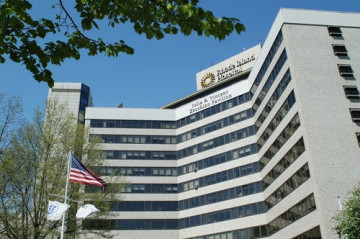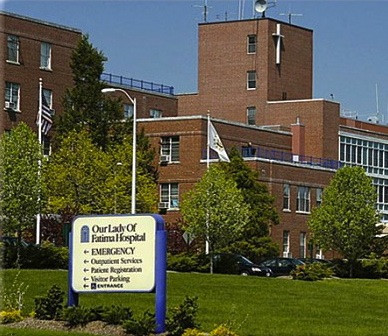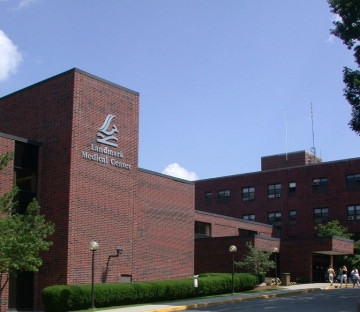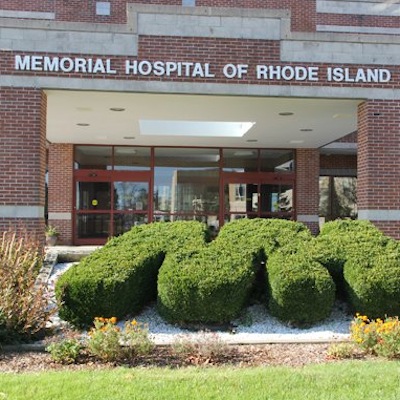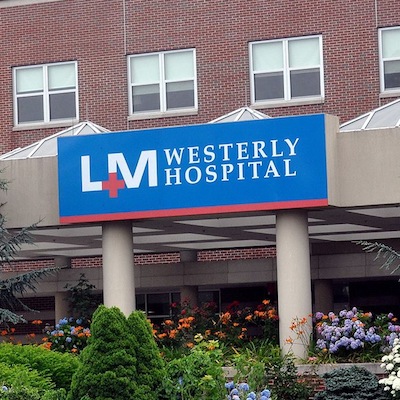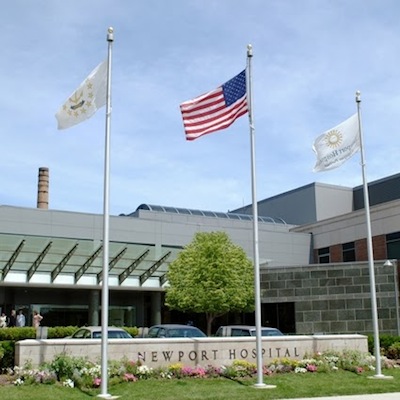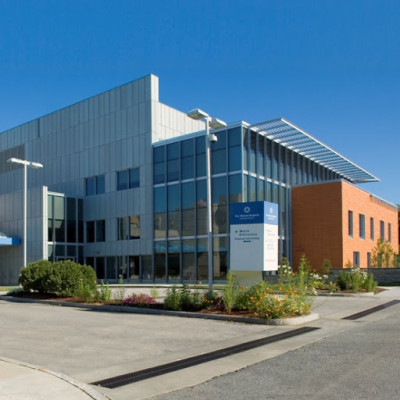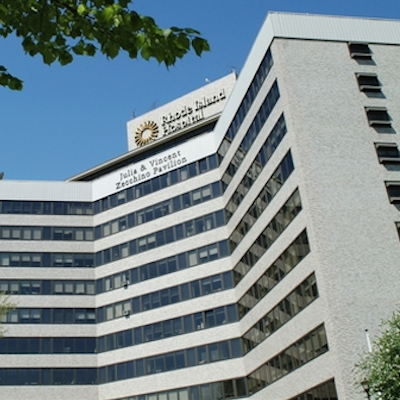RI Hospitals’ Emergency Times Among Worst in US
Thursday, October 23, 2014
It takes about 40 minutes for patients at local emergency rooms to see a doctor or other health care professional, making the Ocean State the third worst in the nation for wait times, federal data shows.
The only state worse was Delaware, where the average wait time was 43 minutes. Washington, DC topped the list at 48 minutes. In Rhode Island, the average wait time was 38 minutes, according to a national ranking produced by ProPublica.
Within the state, average wait times varied considerably. The longest wait, 86 minutes, was at Rhode Island Hospital, which has the busiest emergency room in New England. The shortest was South County Hospital where visitors to the ER can see a doctor or other health care professional—such as physician assistant or nurse practitioner—in about 25 minutes, according to federal data obtained from database maintained by the Centers for Medicare and Medicaid Service.
GET THE LATEST BREAKING NEWS HERE -- SIGN UP FOR GOLOCAL FREE DAILY EBLASTThe initial wait is just the first step in what could become a lengthy stay at the emergency room.
At Rhode Island Hospital, visitors to the ER who end up being admitted as patients linger in the ER on average for 6.4 hours before admission. Then they have to wait to be transferred to a hospital bed. The average wait time for a transfer is nearly two hours. For visitors who end up going back home total average time in the emergency room is about 4.1 hours, according to federal data collected between fall 2012 and fall 2013.
An estimated 4 percent of patients decide to stop waiting and leave before ever seeing a doctor, the data shows.
Ebola in the ER gets fast track in RI
Questions about the quality of emergency room care have rocketed to front pages after a Texas hospital initially turned away a man who later was diagnosed with the Ebola virus. A timeline of his first visit released by federal authorities shows that it took an hour before he was evaluated by a triage nurse on his first visit. She noted his symptoms but not his travel history.
It would be nearly another hour before his first interaction with a doctor who also did not ask about travel history. All told, the infected man, Thomas Duncan, spent five hours in the emergency room at Texas Health Resources Presbyterian Hospital in Dallas before being discharged.
Local health officials say that wouldn’t happen in Rhode Island.
“There is no wait time for someone experiencing Ebola-like symptoms. At EDs, there is signage at the entrance that asks patients who are experiencing flu-like symptoms and have traveled outside the U.S. in the last 30 days to go right up to triage desk. They are then brought to an isolation room,” said Christina Batastini, a spokeswoman for the Rhode Island Department of Health.
Any patients who had the requisite symptoms and travel history would be immediately separated from the others at the emergency center. “At that point, they’re on a completely different track than the general population,” Batastini said. “So the wait times of the general population should not affect the Ebola preparedness.”
In separate interviews, two local emergency medicine chiefs, at Rhode Island Hospital and Fatima Hospital, confirmed they had implemented protocols along those lines. “They’re out of the mix within five minutes,” said Brian Zink, the chief of emergency medicine at Rhode Island Hospital. He said the infectious disease screening for Ebola was put in place about two months ago.
Both hospitals said they had also conducted drills and dress rehearsals of how they would handle a suspected Ebola-infected patient. “We are very well prepared to handle any suspected Ebola patient safely for that patient and for the health care workers who might care for that patient,” Zink said.
When wait times harm patients
As a general rule, a patient with high acuity—meaning a threat to life or limb demanding immediate attention—are seen immediately, according to Zink. It’s patients who are somewhere in between the most serious cases, such as a heart attack or stroke victim, and the most minor, like a sprained ankle, where problems might arise.
Doctors who spoke with GoLocalProv offered the example of abdominal pain. It could be a symptom of the flu. Or it could something more serious, like an aneurysm. Longer wait times put those patients at risk of not receiving the timely care they may need.
“For people who wait longer, the outcomes can be worse,” Zink said.
The busiest ER in New England is in Providence
So why is the wait time so long at Rhode Island Hospital?
One leading factor seems to be the sheer volume of patients it handles. On a given day, the Anderson Emergency Center may see about 285 patients. Over the course of a year, that makes for a little over 104,000 visitors. And that’s not counting an additional 48,000 patients who go to the emergency room at the affiliated Hasbro Children’s Hospital, according to Zink.
Including adults and children, Rhode Island Hospital runs the busiest emergency room in the region—busier, even, than any in Boston, Zink said.
A second factor is the demographic make-up of the population walking through the doors. He said a higher proportion have socio-economic issues that are contributing to their health problems. Zink ticked off a list—homeless, extreme poverty, and drug abuse. Rhode Island Hospital takes its responsibility to care for these patients seriously. “On the other hand, it often makes for congestion,” Zink said.
“We initially look bad in the numbers,” Zink said. “But there’s a lot behind the numbers that’s there as well.”
The initial wait time to see a doctor is just one of many measures of timeliness of care in an emergency room. Zink noted other hospitals—which he did not name—have endeavored to lower initial wait times to advertise for more patients. But there may be other delays during their stay, such as how long it takes to get admitted and how long before an admitted patient is transferred out of the ER and into another department.
For example, admitted patients at Rhode Island Hospital wait on average 117 minutes before being transferred. That’s faster than four other local hospitals which had shorter initial wait times. The longest wait time for a transfer was nearly three hours, at Kent County Memorial Hospital, where the initial average wait time is just 27 minutes.
But Zink said the hospital is taking steps to cut down on its wait times. Starting November 1, it will be staffing its triage area—where patients are initially evaluated—with a doctor from 11 a.m. to 11 p.m. Currently, the area has a physician assistant during those times.
The hospital is also using efficiency improvement techniques to shorten ER timeframes. He said the hospital has been examining all the steps patients must go through on their various journeys through the emergency room, seeing which ones add value and which ones might be unnecessarily repetitive.
“It’s our goal to get wait times down for everyone,” Zink said.
The goal is to improve times for those lower acuity patients while not diminishing care for those with immediate life or limb-threatening conditions. “It’s kind of a dance we all do,” Zink said.
How does Rhode Island’s second fastest ER do it?
At Fatima Hospital in North Providence, the average wait time to see a doctor is 26 minutes, the second fastest in the state after South County Hospital.
“We have a pretty aggressive system,” said Dr. Josiah Child, the chief of emergency medicine at Fatima.
Fatima has at least one nurse practitioner or physician’s assistant in its triage area. From 9 a.m. to 1 a.m. it has two. That’s as many health care professionals as Rhode Island Hospital will have come Nov.1, but the number of patients at Fatima is far lower—about 25,000 last year, a figure that includes adults and children, according to Child.
“For us, that’s the right ratio,” Child said.
Those staffing levels mean that patients of varying severity are all seen sooner rather than later. Those with life-threatening conditions—the patient with a heart attack, a blood clot in their longs—are immediately met by doctors at the ambulance bay.
But those with the injuries or illnesses that are least likely to threaten life or limb can be seen fairly quickly by the staff in the triage area. “We call it a ‘dual fast track,’” Child said.
That frees up the rest of the doctors in the emergency department to deal with those patients in the middle with ambiguous symptoms, such as a patient with abdominal pain.
The fast pace has become a measure of care that Fatima has begun to advertise in a bid to draw more patients. The hospital actually has a wait time estimate displayed on its Web site. The display is connected to the ER computer system and is updated in real time, according to Child.
Since the hospital began marketing its short wait times, last spring, the number of patients expected to come through its emergency room is projected to grow to about 27,000 in 2014, Child said.
But the lower wait times is about much more than simply marketing the hospital for Child. He saw firsthand how speed and efficiency can be related to quality of care when he was a resident in an emergency room at a hospital out of state.
He recalled a woman who showed up and was clearly presenting symptoms of a heart attack. Though hospital workers were aware of her condition she waited in the emergency room because no beds were available. Her wait lasted 30 minutes. During that time, she died. As a result, the hospital where he was working overhauled its emergency room procedures, Child said.
He says the experience impressed upon him the need to make sure patients are cared for quickly. “It’s a personal passion of mine for sure,” Child said.
Stephen Beale can be reached at [email protected]. Follow him on Twitter @bealenews
Related Slideshow: RI Emergency Rooms: How Long You Have to Wait
The below slides show wait times at the 11 hospitals in Rhode Island that have emergency rooms. The wait time is how long a patient has to wait before being seen by a doctor, physician’s assistant, or nurse practitioner. Wait time before admission is how long emergency room visitors who later became inpatients had to wait before being admitted. Wait time before transfer is how long admitted patients had to wait before being transferred to their hospital bed. Time in ER is the total time a visitor who was not admitted as an inpatient spent in the emergency room. Percent who leave before being seen refers to those visitors who decided to leave before being seen by a doctor. For all measures, lower numbers are better. For more on what these measures mean and why they are important click here. The below hospitals are ranked from shortest to longest wait times. Data was taken from Centers for Medicare and Medicaid Service. It corresponds to information collected from fall 2012 to fall 2013.
Related Articles
- See the List: New England’s 50 Best Hospitals Rated By Patients
- New England’s Best Hospitals Rated By Patients
- RI Hospital to Utilize Google Glass in Innovative New Study
- PODCAST: Hospitals Account for 440K Preventable Deaths Annually
- Preventable Hospital Deaths by the Numbers
- Top 10 Hospitals in Rhode Island Rated By Patients
- CHART: New England’s Best Hospitals Rated By Patients
- Top 10 Hospitals in Maine Rated By Patients
- PODCAST: New England’s Best Hospitals Rated By Patients
- Methodology: Best Hospitals in New England Rated By Patients
- Top 10 Hospitals in Massachusetts Rated By Patients
- Hospitals Account for Estimated 440K Preventable Deaths Annually
- RI Hospital: Legalizing Med. Marijuana Does Not Increase Youth Use
- Miriam Hospital To Offer Men’s Cancer Wellness Group
- Are RI Hospitals Ready for an Ebola Outbreak?
- Hospital Association of Rhode Island Releases Joint Statement on Ebola Preparedness
- Women & Infants RI Named Top Hospital for Neonatology
- Rhode Island Hospital Honored for Cancer Treatment Facilities
- Update Circus Accident: 2 Spinal Cord Injuries, 7 Hospitalized
- Newport Hospital To Host Opiate/Heroin Overdose Forum on May 19
- Edelman to Visit Children’s Hospital




_360_360_90.jpg)

